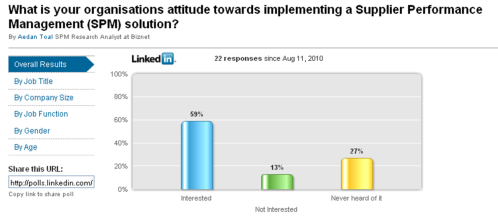In the last part of this post we looked at the need for a dynamic reporting functionality within a Supplier Performance Management system.
Now in this post we can look at the key functionalities of leading SPM vendors that can be used to help better report on and manage supplier performance.
As discussed dynamic dashboards and graphs has become the preferred method for reporting on data. The ease at which colour coded metrics can instantaneously provide visual impressions of performance has made such tools a must for all organisations.
Therefore effective SPM reporting relies heavily upon a systems ability to use captured performance data and produce meaningful reports. A key requirement of such functionality is the ability to generate bespoke reports based on time, location & supplier. For example to build a meaningful report based on Supplier A one is able to filter data to show performance over individual product lines, locations and time periods. This flexibility provides users with the opportunity to drill down into data to identify performance trends and issues.
This performance data can be manipulated and displayed in a number of visually impressive dashboards. A number of variable options provide users with a plethora of potential reporting options to present supplier performance reports.
Users can now, with the leading vendors, use the performance data reporting options to create unique Supplier Awards. Supplier Awards have become an increasingly popular tool to manage key supplier relationships. Leading SPM vendors allow for users to use the reports to generate these unique awards. Officially awarding & documenting good performance has become a great incentive for suppliers.





